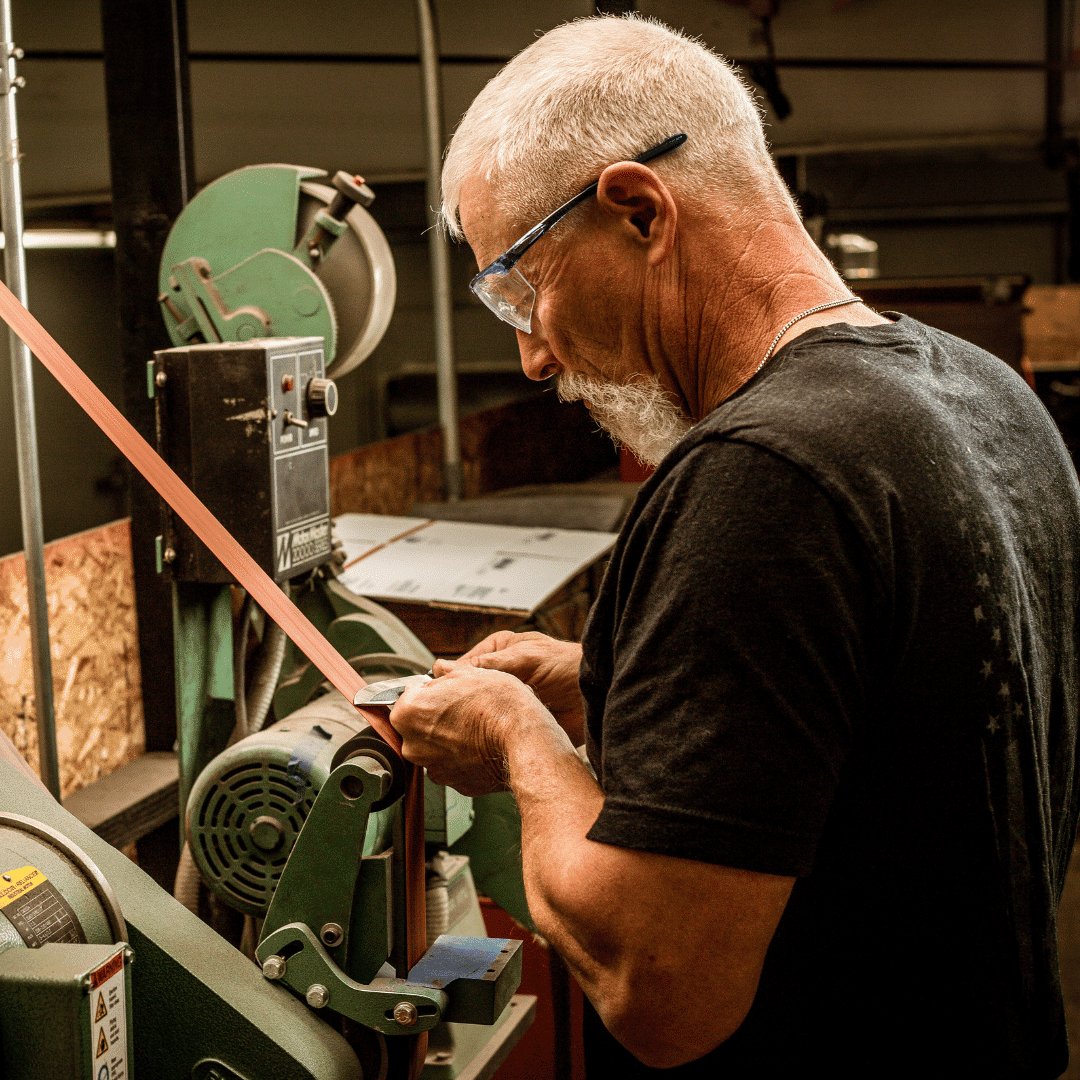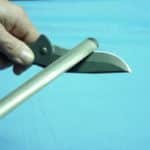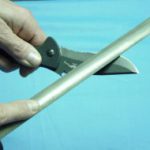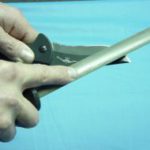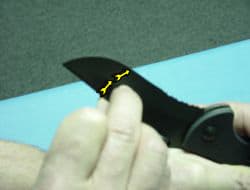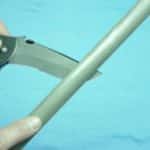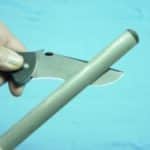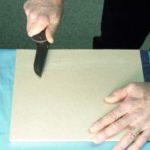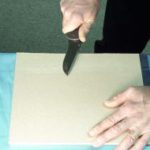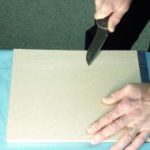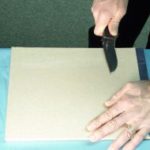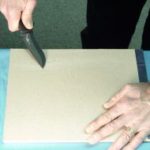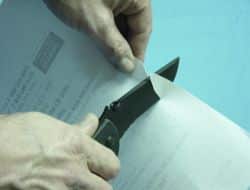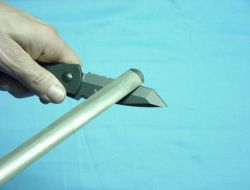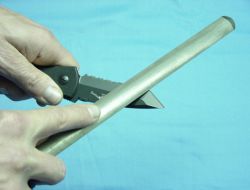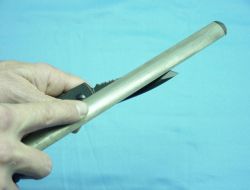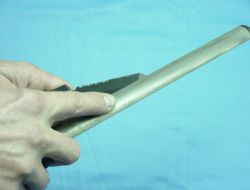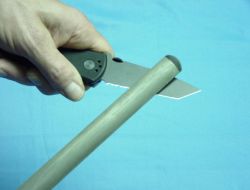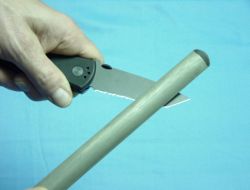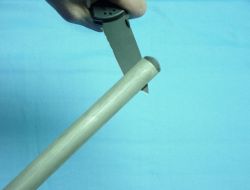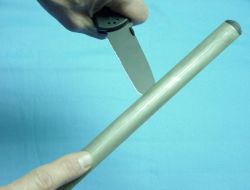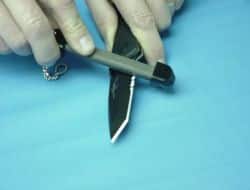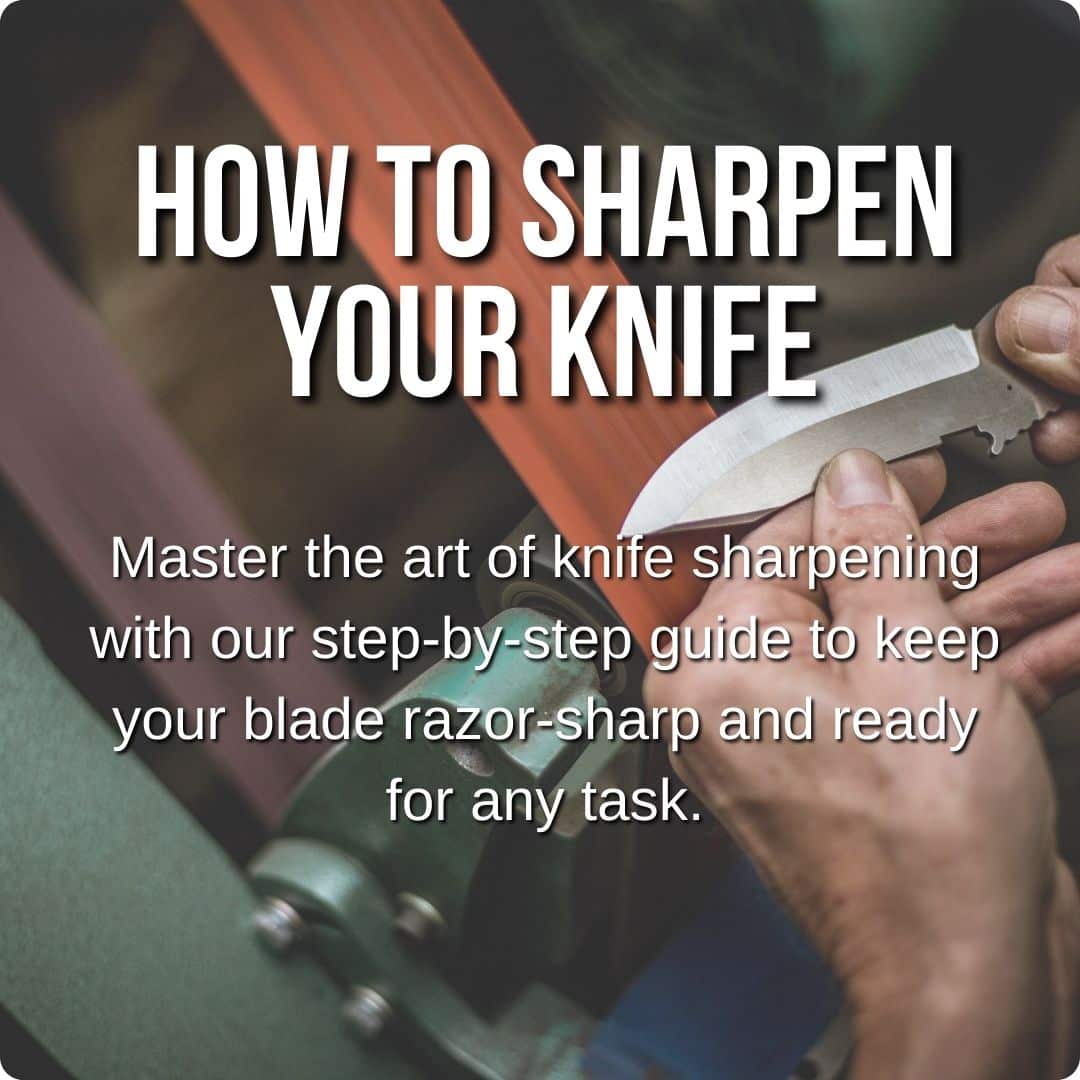
To help you keep your knife sharp and ready to serve you, I'm going to show you some of the Emerson quick and dirty methods using a couple of different procedures to sharpen your knife. We can't show all of the fixtures, devices or methods as there are ton of them. Most of them will work and if you use your sharpening method in the manner shown below, and can improvise a little; I know you can sharpen your knife.
To help you keep your knife sharp and ready to serve you, I'm going to show you some of the Emerson quick and dirty methods using a couple of different procedures to sharpen your knife. We can't show all of the fixtures, devices or methods as there are ton of them. Most of them will work and if you use your sharpening method in the manner shown below, and can improvise a little; I know you can sharpen your knife.
For straight edges, the process is straightforward. “A sharpening a ceramic rod” is the best tool to keep your blade razor-sharp. Here’s how you can do it:
Sharpening Tools: Use a sharpening ceramic rod. These provide the control you need to maintain Emerson’s factory edge. (Available above)
Angle: Angle: Since all Emerson knives are sharpened by hand without a fixture, although close, the edge angle may vary from knife to knife. We recommend taking a black magic marker and “blacking” the edge, then adjusting your grip, or your sharpening fixture until it just removes the marker from the edge of the blade. That is the correct edge angle for you to sharpen your knife.
Strokes: With even pressure, make controlled passes along the rod. “It’s a simple process, but attention to detail is important.”
Using the Commander knife, this sequence shows the initial sharpening of the edge using a diamond stick sharpening rod. Push the stick away from you, along the edge.
For straight edges, the process is straightforward. “A sharpening a ceramic rod” is the best tool to keep your blade razor-sharp. Here’s how you can do it:
Sharpening Tools: Use a sharpening ceramic rod. These provide the control you need to maintain Emerson’s factory edge. (Available above)
Angle: Angle: Since all Emerson knives are sharpened by hand without a fixture, although close, the edge angle may vary from knife to knife. We recommend taking a black magic marker and “blacking” the edge, then adjusting your grip, or your sharpening fixture until it just removes the marker from the edge of the blade. That is the correct edge angle for you to sharpen your knife.
Strokes: With even pressure, make controlled passes along the rod. “It’s a simple process, but attention to detail is important.”
Using the Commander knife, this sequence shows the initial sharpening of the edge using a diamond stick sharpening rod. Push the stick away from you, along the edge.
Turning the knife over, you lightly stroke or kiss the backside just to break the burr free. This only takes a couple of light passes. Incline the sharpener slightly so you don't scratch the surface of the blade and are only touching the very edge.
Turning the knife over, you lightly stroke or kiss the backside just to break the burr free. This only takes a couple of light passes. Incline the sharpener slightly so you don't scratch the surface of the blade and are only touching the very edge.
Next you take the cardboard backside of a yellow legal pad and strop the knife back and forth on the cardboard. You have to use some pressure, so be sure that your fingers are clear of the blade if it were to accidentally close. Do this repeatedly maybe, 10 – 20 strokes on each side.
Next you take the cardboard backside of a yellow legal pad and strop the knife back and forth on the cardboard. You have to use some pressure, so be sure that your fingers are clear of the blade if it were to accidentally close. Do this repeatedly maybe, 10 – 20 strokes on each side.
These photos illustrate the same procedures as used onthe Commanderbut show that you must treat the two cutting edges on the Tanto style blades as separate sharpening operations. Consequently when you strop the knife, you will need to strop the main edge, change your position and strop the front edge.
These photos illustrate the same procedures as used onthe Commanderbut show that you must treat the two cutting edges on the Tanto style blades as separate sharpening operations. Consequently when you strop the knife, you will need to strop the main edge, change your position and strop the front edge.
Changing position, sharpen the front edge.
Changing position, sharpen the front edge.
Same procedure for the back side—main edge deburring. Changing position, front edge deburring.
Same procedure for the back side—main edge deburring. Changing position, front edge deburring.
Serrated blades, designed for cutting through tougher materials, require individual care. Serrations don’t need sharpening as often as straight edges, but when the time comes, Emerson recommends focusing on each tooth individually.
Sharpening Tool: A tapered rod or round sharpener is key here. The small size lets you hone in on each serration.
Method: Place the rod into each serration and follow the original bevel. To preserve the blade's cutting power, you need to “maintain the factory angle” for each tooth. This process takes time, but keeping the blade functioning at its best is worth it.
Consistency: Consistency is critical, just like with straight edges. Apply the same number of strokes and pressure to each serration, ensuring the blade stays even and balanced.
Serrated blades, designed for cutting through tougher materials, require individual care. Serrations don’t need sharpening as often as straight edges, but when the time comes, Emerson recommends focusing on each tooth individually.
Sharpening Tool: A tapered rod or round sharpener is key here. The small size lets you hone in on each serration.
Method: Place the rod into each serration and follow the original bevel. To preserve the blade's cutting power, you need to “maintain the factory angle” for each tooth. This process takes time, but keeping the blade functioning at its best is worth it.
Consistency: Consistency is critical, just like with straight edges. Apply the same number of strokes and pressure to each serration, ensuring the blade stays even and balanced.
**Please print and fill out the Emerson Knives Service Form and send it along with your knife* *WE DO NOT DO SERVICE, WARRANTY WORK OR SHARPEN ANY KNIVES THAT HAVE BEEN CUSTOMIZED OR ALTERED OUTSIDE OF OUR FACTORY AND OR WERE NOT MANUFACTURED BY EMERSON KNIVES, INC.
Service Form For Sharpening Click Here
**Please print and fill out the Emerson Knives Service Form and send it along with your knife* *WE DO NOT DO SERVICE, WARRANTY WORK OR SHARPEN ANY KNIVES THAT HAVE BEEN CUSTOMIZED OR ALTERED OUTSIDE OF OUR FACTORY AND OR WERE NOT MANUFACTURED BY EMERSON KNIVES, INC.
Service Form For Sharpening Click Here
